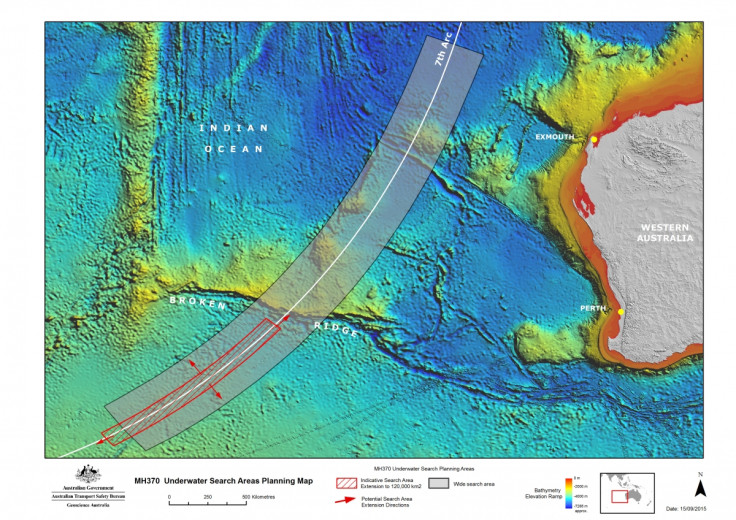Malaysia Airlines MH370: Third vessel capable of searching most difficult areas to join search

A third vessel capable of searching the most difficult parts of the ocean floor will now join two other ships in the search for missing Malaysia Airlines MH370. Havila Harmony, a Fugro vessel will join the search on Saturday (27 November).
The deep sea hunt has been shifted to a different area - the remote part of the Indian Ocean, which is where a senior British pilot had calculated that the Boeing 777 had made a controlled ditching. The aircraft was on a routine flight from Kuala Lumpur to Beijing with 239 passengers and crew on board when it disappeared on 8 March 2014.
Despite international search operations, the aircraft has yet to be found. Other than a flaperon belonging to the plane that was found on Reunion Island in July, there have been no indication where the fuselage has ended up.
The Hugin 4500 Autonomous Underwater Vehicle (AUV), described as the sharpest seeing AUV available has been fitted to a newly charted ship at a marine centre south of Fremantle as better summer sea set in over the search area.The AUV was briefly used in the search for the missing aircraft but with the onset of the southern winter, its deployment and recovery became too risky.
Havila Harmony has the most capable active heave compensated crane yet used in the sea bed search for the airline. The vessel will sail towards the search area tomorrow and is expected to arrive at the designated area on 3 December.
The Joint Agency Coordination Centre, in an operational update, said that the search area has been expanded beyond the original 60,000 square km search area to enable up to 120,000 square km to be searched if required. "Weather continues to impact on search operations but conditions are expected to be improved over the coming months," the centre said.
"The safety of the search crews, as always, remains a priority, and the vessels and equipment utilised will vary to reflect operational needs. More than 70,000 square km of the seafloor have been searched so far," the centre added.
It added that the Search Strategy Working Group continues to review evidence associated with MH370, which may result in further refinement of, or prioritisation within, the search area. The Fugro Discovery, which was undertaking search activities was forced to abandon its operation and return to Fremantle after a crew member fell ill.
The vessel is expected to arrive in port on Friday and conduct resupply before returning to the search area, the centre said. Fugro Equator "continues to conduct bathymetry and underwater search operations in the search area," it added
Recovery plans in place
The centre said: "In the event the aircraft is found and accessible, Australia, Malaysia and the People's Republic of China have agreed to plans for recovery activities, including securing all the evidence necessary for the accident investigation." All three countries had agreed to the recovery activities in April 2015 despite the fact that there was no indication that the search was close to finding the aircraft.
In May, an Australian Transport Safety Bureau, which is leading the underwater search in the southern Indian Ocean for the missing aircraft, said the plans for the recovery "are not a public document at present."However it is not expected that it would be necessary to recover the entire aircraft but rather selected components,"
He also said that a short list of supplies had been identified from the request for expression of interest process for the recovery operation. "The formal contracting of services for recovery will only occur if and when MH370 is positively identified," the spokesman said. It is unclear if the recovery will include the bodies of the 239 people on board. A total of 153 Chinese citizens and 6 Australians were on board the missing aircraft.
© Copyright IBTimes 2025. All rights reserved.






















